2018 Honda Gold Wing Tour Review

An impressive update to Honda's flagship motorcycle
The MO journey to bring you this review of the 2018 Honda Gold Wing Tour has turned into the story of two very different trips gone awry for two very different reasons. However, despite the hiccups along the way, we end up with a comprehensive look at Honda’s touring flagship under a variety of riding conditions, and despite the frustrations of our respective challenges, our impressions of the Gold Wing Tour stand out as remarkably positive.
2018 Honda Gold Wing Tour
| Engine | 19.0/20 |
| Suspension/Handling | 13.5/15 |
| Transmission/Clutch | 9.0/10 |
| Brakes | 9.0/10 |
| Instruments/Controls | 4.5/5 |
| Ergonomics/Comfort | 10/10 |
| Appearance/Quality | 9.0/10 |
| Desirability | 9.0/10 |
| Value | 8.0/10 |
| Overall Score | 91/100 |
First Look: 2018 Honda Gold Wing And Gold Wing Tour
Top 10 Facts About The 2018 Honda Gold Wing
We’ll start with the experience of Sean Alexander and his wife Natalie at Honda’s press introduction for the Wing:
“As the motorcycle press packed their bags in preparation for the new 2018 Honda Gold Wing Tour first rides in Austin, Texas, a sub-freezing blast of arctic air and ice bore down on American Honda’s PR and Marketing crew. The fact that the last rideable weather was now forecast to be the first day of a multi-day press ride must have created quite a dilemma for our hosts in Austin: ‘Do we cancel the Gold Wing press ride?’ or ‘Do we modify the route to shorten it into a single day and miss all of the best and most entertaining roads on the far end?
Get the Flash Player to see this player.
“Lee Edmunds and his team at American Honda played the hand Mother Nature dealt them, going all-in on the strengths of the new 2018 Gold Wing’s comfort and wow factors to carry the day over a truncated route through mostly flat and straight roads that were bordered by brown fields, power lines, and giant church radio antennas. We spoiled motojournalists like to test motorcycles on twisty in hilly country with amazing scenery, so Honda’s polar storm hail-Mary could have resulted in disaster for them.
“But it didn’t. The new 2018 Honda Gold Wing Tour lives up to the hype. Its unconventional new front suspension proved to be properly impressive, while its two-up comfort made for happy couples on the ride. Since many Gold Wings owners spend much of their riding time two-up, Honda encouraged attending journalists to bring their spouse or significant other along for this press intro, and many did. From the conversations around the dinner tables, both the riders and their passengers came away impressed from what could have been a long, boring ride where the participants spent their time cataloging their complaints about the motorcycle.”
We’ll leave Sean and Natalie at the dinner table and move on to our second Gold Wing ride: Evans Brasfield’s.
From the moment that Honda allowed us a first look at the all-new Gold Wings, I knew that I wanted to attend the introduction – and then ride the bike back from Austin to Los Angeles. On top of that, I wouldn’t just make an interstate bomber run, I would take the bike all over the Southwest with a final goal of logging 2,000 miles, which would allow me to really get to know the Wing in a way that can’t be accomplished on a two-day introductory ride. The only problem was that a bike wouldn’t be available to ride away for a couple weeks after Honda’s media introduction. So, Sean and Natalie attended the press ride, and I redirected my efforts towards just riding the Wing back solo after Honda had finished the slew of introductions for media, dealers, and technicians.
The plan for my tour looked doable on paper, but the trip began to unravel quickly when real life intervened. My first 600-mile day went as planned, and the Gold Wing Tour proved to be an ideal companion for gobbling up the miles in conditions that ranged from 65° F down to a low of 23° F as I rolled into Santa Rosa, NM. Since I’ve already written about the events of my ride at the link above, I’ll sum up my trip’s experience by stating that I became progressively sicker with the flu and ultimately cut my route short with a 600-mile final day with a 102° fever. Although my trip was abbreviated, I still managed 1,900 miles over four days and have tons to say about how well the Gold Wing Tour worked.
What follows is a combination of my and Sean’s impressions from our two very different rides on the 2018 Honda Gold Wing Tour.
Engine Performance
I’m not going to spend a lot of time going over in detail all the new features of the Gold Wing. I covered that in my “ First Look: 2018 Honda Gold Wing And Gold Wing Tour.” Consider that article to be the theory of the new Wing and this to be the practical application. And where better to start than a look at the heart of the beast.
The Gold Wing’s 1,833cc SOHC flat-Six is a completely new mill which shares nothing with the previous generation. The design goals were simple: increase both power and efficiency, plus make the engine shorter to allow it to be located further forward in the frame. To enable the more compact size, the cylinder bore was dropped 1mm to yield a perfectly square bore and stroke of 73mm x 73mm, and the distance between bore-centers was shrunk by 9mm. Additionally, the cylinder offset from the left and right cylinder banks was reduced by 4mm. The result is a more powerful engine that is 29mm shorter front-to-back and 13.7 pounds lighter (in 6-speed manual configuration, which is the only way to directly compare the new engine to the previous generation).
The Gold Wing’s engine retains the characteristic otherworldly smoothness of the previous generation. However, the torque delivery feels more pronounced in the bottom end, and once the engine hits the mid-range, it feels significantly more energetic. Throttle response from the ride-by-wire single throttle body is responsive – and lurch-free – at all engine speeds. Changing the ride mode from Tour to Sport brightens the throttle response a tad, but it’s hard to tell since the biggest change between the two modes is how the Dual Clutch Transmission (DCT) operates.
With its latest iteration of the DCT, Honda has hit the ball out of the park when it comes to touring. After a brief period of acclimatization to the way it operates, I found myself quite happy to let the engine do all the shifts for me in the vast majority of riding situations. When you consider that my trip included two 600-mile days, that’s a lot of work that the DCT saved me, and I’m certain I was fresher at the end of the day than I would’ve been otherwise. When approaching corners that I wanted to choose what gear to downshift to, I merely had to hit a paddle with my left thumb. The DCT would upshift back to top gear after I stopped rolling on the throttle. When you’re not in fully manual mode, the trick to keeping the transmission in the gear you want is to keep ramping up the throttle throughout the whole corner. Pause, even for a moment, and the transmission upshifts. This isn’t a big deal, but it does soften the acceleration out of the corner – and you know how we MOrons like to accelerate!
Sean hasn’t always been a fan of Honda’s DCT. He definitely likes to be in control of things. (And I mean that in the nicest of ways, Sean.) So, I was quite surprised when he said, “I think it would be a coin flip as to whether I got the DCT or the traditional manual transmission.” In fact, his notes about the manual transmission were mostly on the negative side, citing a long lever throw and a lack of clutch feel.
Sean also had comments about the engine at touring speeds: “There is a definite, persistent (though not obnoxious) exhaust drone from around 2,100 rpm through about 3,000 rpm when maintaining a constant speed. That works out to about 60-80 mph in 7th gear on a DCT Gold Wing. Honda was trying for a more sporty tone with new 2018 Gold Wing exhaust, but I think they may have overshot their target by a bit. A decibel or two lower with a bit less ear-pressure might have made the drone all but unnoticeable.”
I, too, noticed the drone (as Sean described it) but was completely unbothered by it. Since I ride almost exclusively with earplugs and was aware of Sean’s feelings about it, I took a stint on my ride without them and listened for the drone. Yes, I noticed the tone that Sean was referring to, but I didn’t find it objectionable. Instead, I found the new exhaust note to be pleasantly sporty but not so loud that it intruded in my riding enjoyment. (Also, my earplugs almost completely mask the drone, making it a non-issue when I was wearing them.) Perhaps he is more sensitive in those sound frequencies than I am. Regardless, I think this exhaust tone falls in the realm of personal tastes.
The new Gold Wing’s 5.5-gallon tank has created a bit of controversy, as the previous Wing carried a gallon more fuel. Over the course of my 1,900 miles, I averaged 39.5 mpg (Low: 37.3 mpg, High: 42.1 mpg), yielding a mathematical range of 217 miles. I’m sure some Iron Butt Association riders and other long-distance touring aficionados will bemoan the “short” range, but frankly, I’m ready to stop and stretch my legs after 200 miles of uninterrupted seat time. However, on two instances during my trip, I found myself with the Range display on the dash reading a blank as I rolled into town with over 200 miles on the trip meter. My lengthiest stint had me put 5.434 gallons in the tank after traveling 210 miles. Clearly, I cut it a bit close. Still, place me in the group who isn’t too worried about the bike’s range.
Suspension and Handling
In the list of upgrades announced on the 2018 Gold Wing, the one that garnered the most curiosity was the new front suspension. Let me put my thoughts into highly technical terms: The Gold Wing’s double-wishbone front suspension is pretty freaking cool! My first impression of the design is that it feels almost exactly the same as a motorcycle with a traditional telescopic fork. Well, until you hit a bump or grab a handful of front brake. Although I hit some pretty big bumps on my ride, the force transmitted to the grips was remarkably muted, but more on that in a minute.
My initial concern when reading about the double-wishbone suspension was that I’d feel isolated from what the front suspension was doing since the link between the handlebar and the actual steering head was a pair of tie-rods. That simply isn’t the case in the vast majority of the riding I did on the Wing. Yes, when cranked over in a corner at peg-dragging speeds, I didn’t feel as connected to the front tire as I would on a sportbike, but the reality is that I don’t need to. This is a touring bike, and I’m not pushing the tires to their limits at those speeds and lean angles.
I think it’s time to let Sean gush a little bit about the suspension because it obviously got his attention: “To me, it’s clear that the front suspension and the overall composure of the suspension and linked braking system are the real stars of the dynamics show.
“Specifically, the layout of the new suspension allows the rider to see the tops of the ball joints at the outboard end of the steering tie-rods… that’s the end connected directly to the non-telescoping front fork which is raked all the way out to a 30-degree angle. A byproduct of the suspension’s layout is that the rider can actually see the travel of the front axle through two openings located just ahead of the handlebars. My eyes tell me there is a lot going on down there, but none of it is impacting my hands! Huge bump! I watch the ball joints jump, I swear about six inches in a tenth of a second, and I don’t feel a thing! It’s uncanny watching the suspension do its job on a rough road, two-up at 70 mph, while the steering and bars do precisely not a damned thing. The refinement is almost spooky.
“But it isn’t black magic; that fixed 30-degree fork, the outboard ends of the A-arms and those outboard steering ball joints all operate, literally, on a different plane from the steering head and handlebars. The only thing the bars feel are the steering forces delivered through another set of ball joints on the inboard ends of the tie-rods. All suspension duties are handled by the A-arms, front spring and front damper, which are connected independently from those steering tie-rods. It really works and it puts on a cool visual show while doing it.”
How the front suspension soaks up the bumps is only part of the story, though. The first time you get into a hard-braking situation on the Gold Wing is an educational experience. Yes, the 80-pound reduction in weight plays its part in the new Wing’s braking capability, but the radially mounted six-piston front brake calipers and their 320mm rotors offer an amazing amount of bite, followed by controllable power. The kicker is that the front end has minimal dive under hard braking, so the chassis doesn’t pitch at all, taking a lot of drama out of quick stops. The linked braking balances the system quite well, and despite some full-tilt braking maneuvers, I never triggered the ABS. The DCT also plays a role in braking by downshifting and dragging the clutch as it works its way through the gears. When attacking a winding road, this is quite fun. Around town at much lower braking intensities, it required a little adjustment in technique.
Sean again: “Even two-up with loaded luggage and an extra-heavy rider, the new Gold Wing simply stops, or sheds speed in the most undramatic but effective fashion I’ve ever experienced on a big streetbike.
“Natalie and I were meeting our new Video Producer, Sean Matic, along our route to try to get as much video as we could before the bad weather rolled in. Since I had used the bike’s intercom and phone integration capabilities to stay in contact with him during the ride, I knew he was already on the side of the road somewhere up ahead. As Natalie and I flashed past at about 70 mph, I distracted myself by turning to wave at him as we passed. When I then turned back, I realized we were charging into a 15-mph 90-degree left, at 70 mph – with my left hand still hanging in the air. BIG handful of front brake, the Gold Wing subtly hunkered down and then just plain SLOWED. We made the corner without any extra drama, trail-braking down to about 30 mph at the apex before accelerating away as if nothing happened. It’s feats like this that can make you really respect a bike. I sure do respect the heck out of the Gold Wing now.”
I want to call the Gold Wing’s handling nimble, but my coworkers would quickly point out a whole raft of motorcycles – mostly of the sporting variety – that are actually nimble. So, I’ll temper my comments by saying that it is very nimble for a motorcycle claimed to weigh 833 lbs. While hustling through the twisties on Highway 78 from New Mexico into Arizona, I never forgot that I was riding a big, heavy touring motorcycle. Instead, I marveled at what this big, heavy touring motorcycle was capable of doing up to about a 7/10ths sport-touring pace. In the right hands, a Gold Wing will surprise some unsuspecting riders out on the local Sunday ride.
However, there are some limitations as to how far you can push physics, and the Wing did require a little tweaking to transition from touring mode to canyon carver. Yes, changing the ride mode from Touring to Sport does stiffen up the suspension, but it still was on the soft side for the type of hustling I was doing along Highway 78. Changing the base settings from Rider with Luggage to Two Riders with Luggage improved things. Single mid-corner bumps were absorbed, but a series of rolling bumps in a sweeper could upset the chassis and require slowing down a bit. However, I see this as less of a criticism of the suspension than a note about how far out of the typical touring scenario the Gold Wing is capable of flying.
Touring Amenities
Creature comfort is one of the defining features of a full-dress touring motorcycle, and the Gold Wing has no shortage of them. I’ll start with the controversial (well, at least in the comments in my first look article) smaller fairing and windshield. My travels took me through temperatures ranging from the mid-70s to the low-20s, and I feel that the Gold Wing’s aerodynamics were top-notch.
The electrically-adjustable windshield (hooray!) did a good job of offering breeze when I wanted it and protection when I needed it. While some of the credit for my comfort goes to the heated seat and grips plus my Spidi 4Season suit and Aerostich Kanetsu Airvantage Electric Vest, the pocket of still air made it possible for me to ride for extended periods in some seriously cold weather. (I took perverse pleasure in passing cars carrying bundled-up people down highways with snow on either side.) I mostly kept the windshield a few inches from its highest position. The airflow over my helmet was quiet, and the back pressure I felt in the highest position was minimized. (Note: Sean felt absolutely no back pressure with the windshield fully extended with a passenger.) When the temperatures rose, I lowered the screen until I found the right balance of cooling wind and helmet noise. I never encountered any helmet-jostling turbulence, but at its lowest position, the windshield did deliver a low-frequency rumble at the base of my helmet that might grow tiring over a long day.
The riding position is perfect for touring. The neutrally placed pegs are only slightly forward in a natural seating position, and the seat-to-peg distance is ideal for my 32-inch inseam. My torso was in a comfortable, all-day upright position. The seat is wide, flat, and properly padded. My butt was remarkably pain-free at the end of both my 600-mile days days. Sean’s notes concurred with mine: “Both of us were fresh and ready for another full day in the saddle when we arrived at the hotel.”
With a reasonable 29.3-inch seat height, one would think that the reach to the ground would be easy, but the width of the saddle extends the relative reach. I have fairly long legs, and I have to stretch to flat foot on both sides of the Wing. Fortunately for shorter riders, Honda included Walking Mode on the DCT models for maneuvering the Wing at low speeds. It works exactly as you would expect in assisting the rider in moving both forward and reverse at a walking pace with the press of a couple buttons. What I didn’t expect was how useful it is at saving me from dumb things that I do – like needing to turn around an 800-pound motorcycle on a narrow road that suddenly changed from hard-packed dirt to sand. I found myself in just such a predicament when photographing the Gold Wing with windmills in the background. Without Walking Mode to help me make a multi-point turn in the sand, I’d have ended up hiking a mile or so out to the highway to look for help. (With the double-wishbone front suspension, I couldn’t bounce the bike backwards like I typically would with a telescopic fork.)
The other controversy on the 2018 Gold Wing Tour is the reduction of luggage capacity compared to the previous generation. For a quick reminder, the 2017 Wing was capable of carrying a total of 150 liters of cargo in its saddlebags and trunk. The 2018 Gold Wing Tour can only carry 73% as much stuff, 110 liters in total – 30 liters in each saddlebag and 50 liters in the trunk. While MO generally subscribes to the “more is more” philosophy, I’ll admit that the volume of last year’s luggage would look out of proportion on the Wing’s new, slimmer lines. So, how is the new capacity to live with while out on the road?
For me, the issue with the bags is less about their capacity and more about the requirements of all side-opening saddlebags. Simply put, if the manufacturer doesn’t include some kind of cargo net in the bags, stuff falls out when they are opened. For day-hopping this isn’t an issue because you probably aren’t carrying that much, but for an extended ride, accessory bag liners are required – or you risk having your t-shirts and undies fall out every time you open the door. Since Honda’s liners weren’t available in time for my tour, I had to get along with using zip-locking plastic bags. I think everyone who owns one of the new Gold Wings will end up buying the accessory liners at some point.
In the trunk, I did feel the pinch of the smaller capacity. My camera bag, which has fit in every other trunk that I’ve tried on touring bikes, was an extremely tight fit. In fact, I had to take some of its contents out and pack them on either side of the camera bag in the trunk to get everything inside. For a more universal measurement, I was able to fit my XL Shoei RF-1200 and a S Shoei RF-700 into the trunk without issue. However, nothing bigger than a small would fit alongside my XL helmet. Big-headed couples caveat emptor.
The only other quibble I have about the bags is their persnicketiness about where you press them to close. Both the trunk and the saddlebags have two latches that must completely lock or you’ll get a helpful reminder flashing on the dash. When the bags are empty, pressing from the exact center between the latches usually remedies the issue. If the bags are full, you may have to adjust where you press to get the lids to seat completely. On the positive side, the soft-touch buttons used to open the bags exude quality that I appreciated every time I pressed them.
The infotainment system that Honda designed for the Gold Wing is a tour de force befitting a flagship model. The centerpiece is the 7-inch TFT display screen set between an analog speedometer and tachometer. Two smaller LCD displays at the left and right edges of the dash display other essential information. The layout is thoughtful and easy-to-read with a quick glance. In a break from many of the screens seen in other touring models, the Wing’s screen is not touch-enabled. When at a stop, a handy center-mounted joystick controls the menus. At speed, an array of buttons on the left grip handles the tasks.
Out on the open road, the two screens I spent the most time on were the integrated GPS and Apple CarPlay. I did occasionally dip in to the SiriusXM screen to change stations, but after that, I’d usually go back to the GPS. The Gold Wing’s GPS is the best motorcycle GPS I’ve had the pleasure of sampling. The wide screen offers plenty of room for the map and the list of upcoming turns. When a turn is approaching, a secondary map with higher resolution replaces the turn list on the right side of the screen, simplifying the act of getting through complicated intersections in unfamiliar locations. The GPS can also import files from the USB input, making it possible to follow complicated routes. For daily use, however, I’d probably find myself using CarPlay and Apple Maps.
According to Sean, the dash-mounted speakers and those in the trunk are plenty loud, and they’re clear enough to listen to talk radio at highway speeds. I chose to use my Sena 30K and earbuds as my music source, and the infotainment system was happy to oblige. (Also, in order to use CarPlay, a headset must be paired and the iPhone must be plugged into the USB port.)
My only issue with the infotainment system involves the CarPlay integration. When I initiate a call through Apple CarPlay – usually via Siri – I can’t switch away from the phone screen and back to the GPS display until the call is over. Hitting the Home button does take me to that screen, but the controls are locked while on a call, effectively making CarPlay and the phone screen my only choice. However, if I’m using Apple Maps inside of CarPlay, I can easily switch to that screen while talking on the phone. So, I suspect the GPS issue might be due to a CarPlay limitation.
The End of the Tour
My time with the 2018 Honda Gold Wing Tour was both enlightening and frustrating. The frustration comes from getting extremely sick and not really being able to really enjoy my days on the open road more fully. That said, I don’t think I could have chosen a better mount for my extended ride.
The Gold Wing Tour has the cross-country chops to inhale the mileage on the highway or meander your way down the most scenic of winding roads. The new engine has improved power in the places that a touring mount should, and the DCT relegates the old-fashioned standard transmission into also-ran status for touring duty. Honda’s weight-loss program pays dividends in every performance category, but the double-wishbone suspension wins the day when it comes to the bike’s dynamic improvements.
The 2018 Honda Gold Wing Tour DCT starts at $27,700 and is available for test rides at Honda dealerships.
2018 Honda Gold Wing Tour
+ Highs
- Fantastic front suspension
- New engine with best DCT yet
- Excellent weather protection
– Sighs
- Reduced luggage capacity
- Some riders might want more fuel range
- Windshield causes helmet noise in lowest position
In Gear
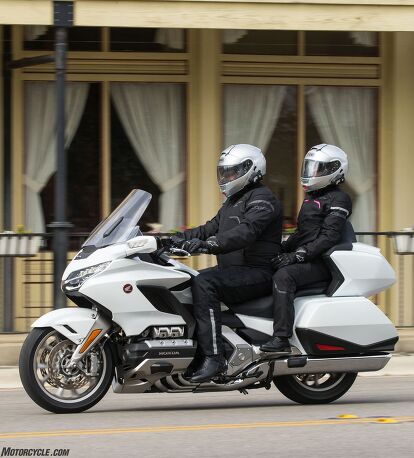
Sean:
- Helmet: Shoei Neotec
- Communicator: Sena 10C
- Jacket: Alpinestars Hyper Drystar
- Pants: Alpinestars Hyper Drystar
- Gloves: Alpinestars Equinox Outdry
Boots: Alpinestars SMX-6 v2 Gore-Tex
Natalie:
- Helmet: Shoei Neotec
- Communicator: Sena 10C
- Jacket: Alpinestars Stella Hyper Drystar
- Pants: Alpinestars Stella Hyper Drystar
Gloves: Alpinestars Equinox Outdry

2018 Honda Gold Wing Specifications | ||
|---|---|---|
Honda Gold Wing | Honda Gold Wing Tour | |
| MSRP | $23,500 – $23,800 (6-speed) $24,700 – $25,000 (DCT) | $26,700 – $27,200 (6-speed) $27,700 – $28,200 (DCT) $31,500 (DCT & Airbag) |
| Engine Type | 1,833cc horizontally opposed six-cylinder | |
| Bore and Stroke | 73mm x 73mm | |
| Fuel System | EFI, 50mm throttle body | |
| Compression Ratio | 10.5:1 | |
| Valve Train | Single overhead Unicam w/ 4 valves per cylinder, finger-follower rocker arm on intake, roller-rocker arm on exhaust | |
| Transmission | 6-speed manual or 7-speed automatic DCT w/ Walking Mode F/R | 6-speed manual w/ Reverse or 7-speed automatic DCT w/ Walking Mode F/R |
| Final Drive | Shaft | |
| Front Suspension | Double-wishbone front-suspension system w/ Showa shock absorber, 4.3 in. travel | |
| Rear Suspension | Pro-Link system w/ Showa shock absorber, 4.1 in. travel | |
| Front Brake | Two radially mounted 6-piston Nissin calipers w/ 320mm rotors, electronically controlled combined ABS | |
| Rear Brake | 3-piston Nissin caliper w/ 316mm rotor, electronically controlled combined ABS | |
| Front Tire | 130/70-18 | |
| Rear Tire | 200/55-R16 | |
| Rake/Trail | 30.5° / 4.3 in. | |
| Wheelbase | 66.7 in | |
| Seat Height | 29.3 in. | |
| Curb Weight | 787 lbs. 800 lbs. (DCT) | 833 lbs. (6-speed & DCT) 842 lbs. (Air Bag DCT) |
| Fuel Capacity | 5.5 gal. | |
| Available Colors | Candy Ardent Red, Matte Majestic Silver, Pearl Stallion Brown | Candy Ardent Red, Pearl White, Pearl Hawkseye Blue |

Like most of the best happenings in his life, Evans stumbled into his motojournalism career. While on his way to a planned life in academia, he applied for a job at a motorcycle magazine, thinking he’d get the opportunity to write some freelance articles. Instead, he was offered a full-time job in which he discovered he could actually get paid to ride other people’s motorcycles – and he’s never looked back. Over the 25 years he’s been in the motorcycle industry, Evans has written two books, 101 Sportbike Performance Projects and How to Modify Your Metric Cruiser, and has ridden just about every production motorcycle manufactured. Evans has a deep love of motorcycles and believes they are a force for good in the world.
More by Evans Brasfield



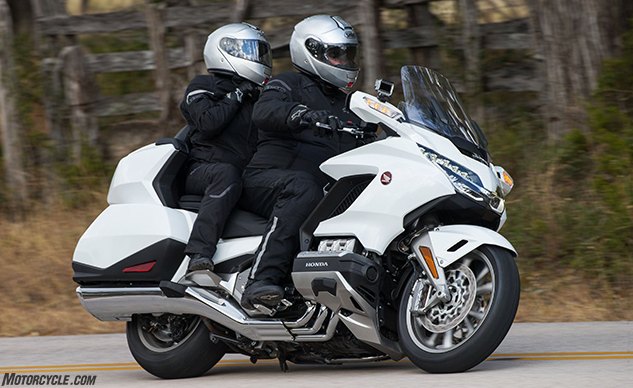





































































































































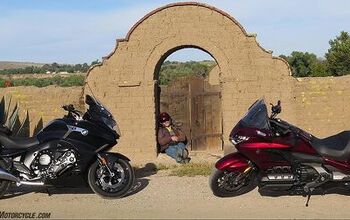
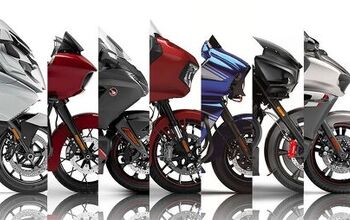
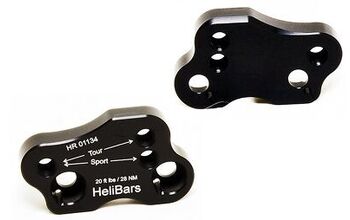
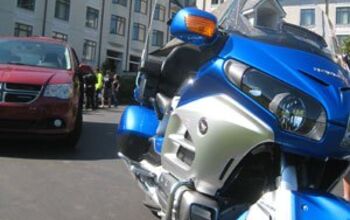













Comments
Join the conversation
Where's the scrambler version? (I kid but, someone will eventually ask)
Nice article...I wanted to just add a few comments since I rode the old model for 15 years and now ride a 2018.
Smaller fuel tank...well I 've ridden farther on my 2018 on a tank of fuel than I ever did with my 03 model that carried over a gallon more fuel. I've gotten 286 miles from a tank of fuel. The 2018 has exceeded my expectations with the fuel mileage and makes the smaller fuel tank a moot point.
Clutch level pull...there is definitely a different feel with the 2018's clutch compared to the old model and it takes a bit of adjusting...but after some miles, the clutch feels natural and very nice..I have no complaints...and the transmission....the new 6 speed with the slipper clutch is a huge upgrade over the old models 5 speed...its shifts more precise with shorter shift throws, is quieter, smoother both with upshifts and downshifts, and the 6th gear lowers the cruising rpms. The new 6-speed is the transmission that wing riders have been saying they wanted on the forums for the last 10 years. Honda doesn't get enough credit for the new 6 speed transmission.
The seat...everybody's different with seats but I'm very surprised that the testers in the article are claiming they could go 600 miles in comfort with the stock seat....heck, I couldn't even ride 70 miles before the stock seat caused discomfort. The stock seat with the 2018 was the worst seat I've ever rode on. Wingsoft fixed the stock seat for me and its a hundred times better than how Honda made the seat. I can now ride all day on the Wingsoft seat...it should also be noted that I had to have the old models seat done to be comfortable on all day rides too.
The wind management is just superior with the 2018. The old model while it offered very good weather protection, could get rather stuffy riding in hot weather, but the 2018 with its power windshield is much nicer and much more comfortable riding in hot weather. I like the added air flow that the 2018 offers and I find the rain protection and the cold weather protection to be just as nice as the old model despite the fairing being 8 inches narrower. I never felt the vents on my full face Shoei working with the old wing, but with the 2018 the air flow through my helmet is just so very nice and much more comfortable...I didn't know what I was missing and how much nicer the riding could be with the added air flow that the power windshield offers.
Weight loss...the weight loss can be felt as soon as you throw your leg over the seat...everything is easier compared to the old model from backing it out of your garage to making tight U turns....the weight loss is a very nice upgrade.
Suspension….the new Gold Wings OEM suspension is much better than the old models OEM suspension. The new wing rides very nice and the front end is much more ridged...but the suspension with the new wing is under damped and under sprung ,especially for fast paced two up riding...but even with its soft suspension the new wing is just so much better than the old wings oem suspension...but like with the old wing Traxxion can tune the suspension to the needs of more demanding riders and its well worth the money for better suspension.
The drone...yes the exhaust does have a drone and I don't care for it. I wish Honda would had made the exhaust as quiet as the old models exhaust.
Overall though, Honda did a heck of a job with the new Gold Wing, except for the smaller luggage capacity and the helmet lock, the new Gold Wing is better in everyway and is the best Gold Wing Honda has ever made.